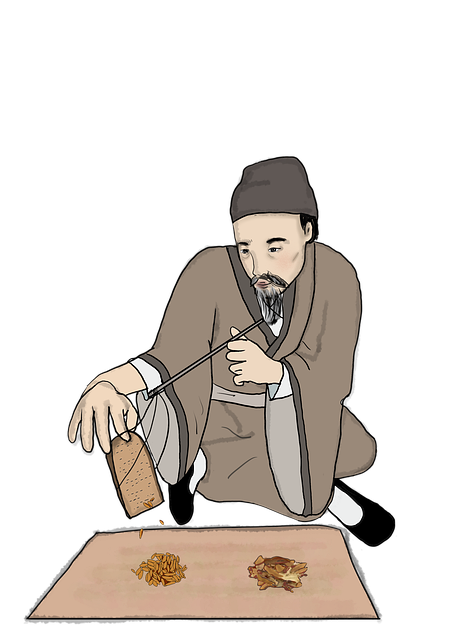Stem cells and regenerative medicine offer groundbreaking solutions for joint pain, particularly osteoarthritis, through cartilage production and specialized cell delivery. Therapies like mesenchymal stem cells (MSCs) and platelet-rich plasma (PRP) stimulate tissue repair and reduce inflammation. Personalized medicine considers individual patient profiles, revolutionizing treatment with improved mobility and long-lasting relief. Advanced techniques like 3D printing engineer tailored joint structures for precise restoration.
The future of pain management looks promising with regenerative medicine, especially for joint pain, offering a revolution in treatment. This cutting-edge approach leverages stem cells and advanced therapies to restore damaged tissues and alleviate chronic pain. By tailoring treatments to individual patients, healthcare professionals can achieve personalized relief. From engineering tissues for joint restoration to unlocking the potential of stem cells in joint regeneration, these innovations hold immense hope for those suffering from debilitating joint pain.
Unlocking Potential: Stem Cells and Joint Regeneration
Stem cells hold immense potential in the realm of regenerative medicine for joint pain. These undifferentiated cells have the remarkable ability to develop into various types of specialized cells, offering a promising approach for repairing and regenerating damaged joint tissue. By harnessing the power of stem cells, researchers aim to revolutionize treatments for conditions like osteoarthritis, where the deterioration of cartilage leads to severe joint pain and disability.
The uniqueness of stem cells lies in their capacity to differentiate into chondrocytes, the cells responsible for cartilage production. This capability could enable the body’s natural healing mechanisms to be enhanced, fostering new cartilage growth and restoring joint function. Ongoing research explores various methods to effectively deliver and guide these cells, ensuring they integrate seamlessly into the damaged joint environment. Such advancements in regenerative medicine promise not only pain relief but also improved mobility and quality of life for individuals suffering from debilitating joint conditions.
Advanced Therapies for Chronic Pain Management
The field of regenerative medicine is offering promising advancements in chronic pain management, especially for conditions affecting joints. One prominent therapy gaining traction is mesenchymal stem cell (MSC) therapy, which has shown remarkable potential in treating osteoarthritis and other joint-related ailments. MSCs can differentiate into various types of cells, including those found in cartilage, bone, and connective tissue, enabling their use in repairing damaged joint structures and reducing pain.
Additionally, advanced techniques such as platelet-rich plasma (PRP) therapy are being explored. PRP involves enriching blood with a high concentration of growth factors to stimulate the body’s natural healing mechanisms. This approach has shown efficacy in accelerating tissue repair and reducing inflammation, making it a potential game-changer for managing chronic joint pain without relying heavily on pharmaceuticals or invasive procedures.
Personalized Medicine: Tailoring Treatments to Patients
Personalized medicine is a rising star in the field of regenerative medicine for joint pain, marking a significant shift from one-size-fits-all treatments. By leveraging advanced technologies and an in-depth understanding of individual patient profiles, healthcare professionals can now design highly tailored therapies. This approach considers genetic predispositions, lifestyle factors, and the unique characteristics of a patient’s joint damage, leading to more effective pain management.
Through personalized medicine, patients with joint pain can expect treatments that are not only more efficient but also safer. By taking a precise, patient-centric approach, regenerative therapies aim to address the root causes of pain rather than merely masking symptoms. This individualized care promises a new era in managing chronic and acute joint conditions, offering hope for improved mobility, reduced inflammation, and long-lasting relief for patients suffering from joint pain.
Engineering Tissues for Joint Restoration
Regenerative medicine for joint pain offers a promising avenue for restoring damaged tissue and alleviating chronic conditions. One innovative approach is engineering tissues specifically designed for joint restoration. This involves cultivating cells in controlled environments, often using biomaterials, to create functional joint structures. By mimicking the natural architecture of joints, researchers aim to develop grafts that can integrate seamlessly with existing tissues, promoting healing and restoring mobility.
Advanced techniques like 3D printing and bioprinting further enhance this process by allowing for precise construction of complex joint structures. These methods enable customization to match individual patient needs, ensuring more effective and personalized treatment for regenerative medicine for joint pain.
The future of regenerative medicine for joint pain looks promising, with ongoing advancements in stem cell therapy, advanced therapies, and personalized treatment approaches. Unlocking the potential of these innovative techniques offers a new frontier in managing chronic joint pain, aiming to restore function and improve patients’ quality of life. Continued research and development in engineering tissues for joint restoration further emphasize the potential for revolutionary changes in pain management, transforming the way we approach this prevalent condition.
